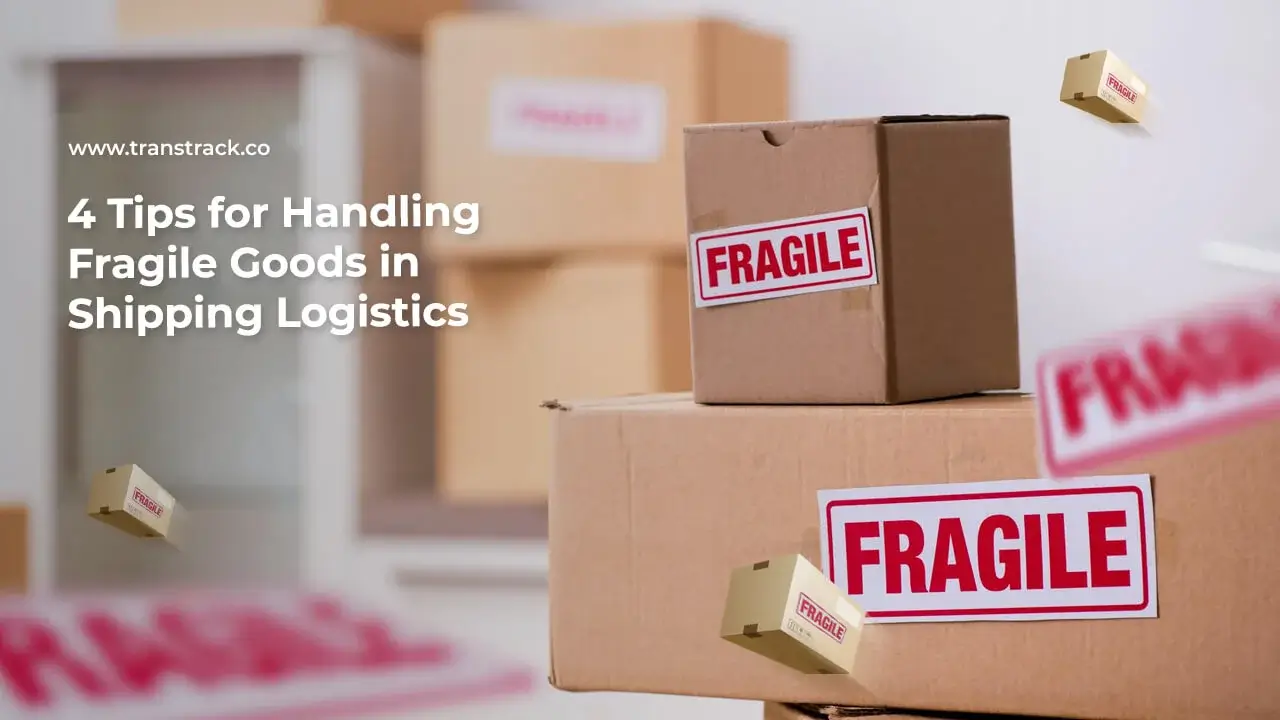4 Tips for Handling Fragile Goods in Shipping Logistics

Shipping is one of the most crucial aspects in the world of logistics. However, when we talk about shipping, there is a term that often attracts attention, namely fragile goods. In the world of logistics and distribution of goods, the term fragile is not unfamiliar.
Fragile goods are types of glassware that require extra careful handling so that they are not damaged or broken during the shipping journey. But it turns out that not everyone fully understands what fragile is and what items fall into this category.
In this article, TransTRACK will detail what exactly is meant by fragile goods, symbols on fragile stickers, examples of fragile goods, and tips for handling fragile goods in logistics safely.
Definition of Fragile Goods
By definition, fragile items are items that are fragile, easily damaged, or easily broken if not handled with the utmost care. These items are sensitive to impact, vibration, overpressure, extreme temperatures, or certain other conditions.
Due to their nature, shipping glassware requires extra care from logistics workers. In the world of logistics, a good understanding of glassware is essential in order to avoid losses that may arise due to damage to goods.
Examples of Fragile Goods
Fragile goods can include a wide range of products, from glassware that cracks easily, to art that needs extra protection. Some examples of fragile items include:
- Glass or Ceramics: Items such as glass plates, glasses, or vases fall under the category of glassware.
- Electronics: Electronic items such as laptops, cameras, or other electronic equipment often have components that are prone to damage.
- Art Items: Paintings, sculptures, or other art items require special protection to prevent them from being damaged during shipping.
- Furniture and Home Decor: Some furniture and home decor items also fall under the category of glassware, such as dressers, chairs, wall hangings and so on.
Meaning of Symbols on Fragile Stickers
When shipping fragile goods, the logistics department will usually place a sticker containing special symbols. The symbols on the sticker provide visual cues to all parties involved in the distribution chain of logistics to treat the package with care. Here are the meanings of the symbols on the glassware sticker:
Handle with Care
The symbol with the words “Handle with Care” instructs all parties involved in the shipment to treat the goods with care. This includes the process of moving and handling the goods from the beginning to the end of the delivery journey. Those handling the package are expected to avoid bumps, shocks, or falls that could damage the contents of the package.
Do Not Bend
This symbol provides clear instructions that items inside the package should not be bent. It is commonly used to identify documents, papers, or other items that are sensitive to pressure or deformation. Recipients and all parties involved are urged to ensure that packages are not subjected to treatment that could damage their original shape.
Keep Dry
This symbol provides a warning that the items inside the package are susceptible to damage from water or moisture. This is especially important for items that are easily damaged or affected by water, such as paper, textiles, or electronics. All parties must ensure that the package is not exposed to rain or moisture that could damage the contents inside.
This Side Up
The “This Side Up” symbol provides clear instructions on the correct position of the package during shipment. It is generally used for items that have a special orientation or are easily damaged if placed in a certain position. It is important that all parties involved adhere to these instructions to minimize the risk of damage to the goods.
Tips for Handling Fragile Goods in Logistics
In order for fragile goods to reach their destination in one piece, there are several special treatments and procedures that need to be carried out in the logistics process, namely:
Packaging
Glassware should be packed very carefully using protective materials such as foam/cork, bubble plastic, and protective cardboard. The aim is to isolate the goods from both impact and vibration. Foam and bubble plastic act as cushioning while protective cardboard reinforces the outer packaging.
Storage
When stored in a warehouse while waiting for delivery, fragile items need to be stored on shelves or in a special location separate from items with high mobility such as medicine or food. The goal is to avoid potential collisions while in the warehouse.
Transportation
When being transported, fragile items should be placed in the center of the transport truck near the dividers to minimize shaking. The cushioning material should be thick enough around them to prevent them from shifting. Truckers also need to drive carefully and avoid sudden braking to keep the goods safe.
Labels and Warning Signs for Fragile Goods
To facilitate identification, each package of fragile goods must be specially labeled in the form of a fragile sticker. This label makes it easier for logistics officers to recognize fragile goods so that they are always vigilant when handling them.
In the context of fragile goods delivery, technology also plays an important role. One solution that can help companies manage freight shipments more efficiently is through the use of a Fleet Management System. This system allows real-time monitoring of delivery vehicles, ensures on-time delivery, and provides accurate data regarding delivery conditions. Fleet Management System as offered by TransTRACK, can assist companies in managing and optimizing the delivery process, including fragile goods. With its advanced features, the system provides full visibility of the entire fleet, allowing companies to respond quickly to changing conditions and minimize the risk of damage to goods while in transit.
Topic





